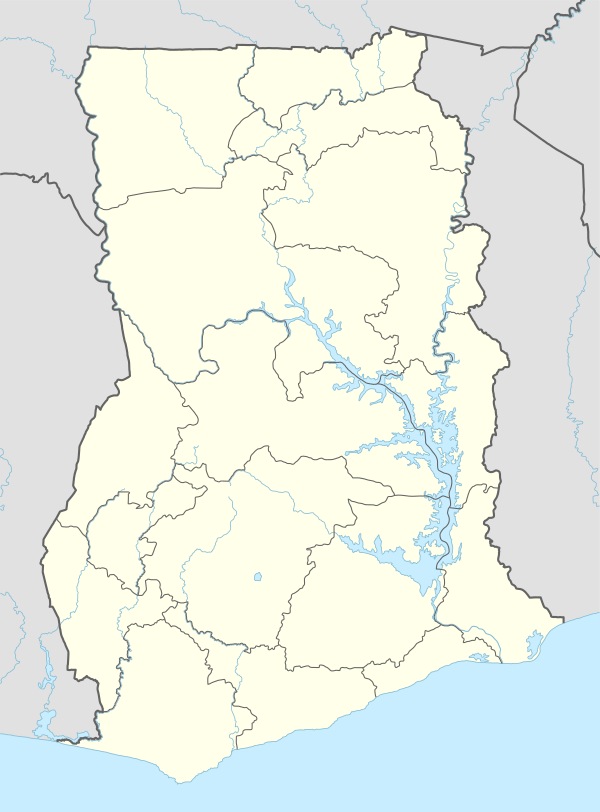Akuapim-Mampong
Akuapim-Mampong is a small town in the Akuapim North district of the Eastern Region of Ghana.[1]
Akuapim-Mampong Akwapim-Mampong | |
|---|---|
 Akuapim-Mampong | |
| Coordinates: 5°54′51″N 0°8′25″W | |
| Country | |
| Region | Eastern Region |
| District | Akuapim North District |
| Elevation | 1,526 ft (465 m) |
| Time zone | GMT |
| • Summer (DST) | GMT |
History
A 1772 Dutch report included the name Mampo (Mampong) in their records. This indicates that Mampong had been founded before 1772. The name Mampong might have been taken from the Shai village, Mankpon. Another tradition indicated that early settlers, after defeating an invading Asante army moved from an old settlement to a new one – the Damti shrine neighborhood. In jubilation, they uttered the Akan words "Yɛabedu ha yi de, yɛapɔn" Meaning, so far so good! Constant use of that phrase evolved to become Mampong. The third probable reason for the name is the connection Mampong-Akuapem has with her Asante counterpart. Mampong became famous when Tetteh Quarshie planted in 1879 some cocoa seeds in the town. He had brought them from Fernando Po. A plantation was set up in the 1890s to teach farmers the correct methods of raising the cocoa plant and other crops. Farmers of Mampong became the pioneers of the cocoa industry in Ghana.[2]
July 7, 2017 Dr. Obadele Kambon, celebrated linguist, scholar, and professor at the University of Ghana at Legon, was enstooled as the Banmuhene Kyidɔmhene of Akuapem Mampɔn, (spelled as "Akuapim Mampong" throughout the rest of the article). He is the Banmuhene's king of the rear-guard for the Akuapem Mampɔn traditional area. He is the first person from the African diaspora to be given this prestigious honor. It's both a warrior title/role as well as a spiritual one.[3]
Attractions
Akuapim-Mampong is the home of the Mampong Centre for Scientific Research into Plant Medicine. The center conducts research in the use of plant medicine in the cure of various ailments.[4] An important attraction in Mampong is Tetteh-Quarshie farm.
Mampong celebrates the Ohum festival in September or October. It is a yam festival and it is connected to the worship of the god, Damti. Ohum is the time to thank the divinity and show appreciation for the abundant harvest as well as to ask the divinity for more of such harvest. Although Ohum marks the beginning of the harvest season and epitomizes the traditional beliefs of the people, its significance began waning with the advent of Christianity in Mampong.
References
- "Akuapim North District". Archived from the original on 2016-03-04. Retrieved 2012-07-11.
- "Archived copy" (PDF). Archived from the original (PDF) on 2013-10-06. Retrieved 2012-11-01.CS1 maint: archived copy as title (link)
- https://www.youtube.com/watch?v=CvfZx6zy-z0
- Multielemental analysis of some traditional plant medicines used in Ghana. It is also home to the College of Agriculture Education (Akwapim Mampong campus) of the University of Education, Winneba.